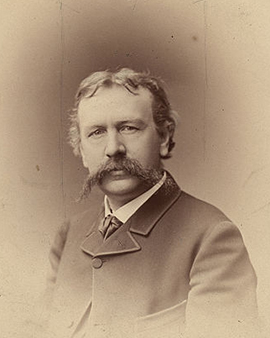The 19th century cast its shadow on the world of art, and at the center of this swirl of creativity was Elihu Vedder, a name that stands out in the annals of American Symbolism. Born in the winding streets of New York in February 1836, Vedder's career took him from the bustling alleys of America to the storied streets of Rome, his every step impressively captured by his art print. The true roots of his creativity lie in the complexity of his childhood. Born to Dr. Elihu Vedder Sr. and Elizabeth Vedder - a couple who shared the intimacy of cousins - his father's adventurous spirit took the family to Cuba. During this time, young Vedder found refuge with his grandfather Alexander in Schenectady and within the walls of a boarding school.
The whispers of art lured Vedder at an early age, and despite the reservations of his father, who had other plans for him, he pursued his artistic ambitions with his mother's blessing.
Vedder's educational path led him to the renowned artists Tompkins H. Matteson in New York and Francois Edouard Picot in Paris. But it was Italy - a country that shimmered from the Renaissance to the Macchiaioli artists - that really opened his eyes. It was here that he forged deep bonds, especially with Giovanni Costa, his colleague. But when his father withdrew financial support, Vedder was thrown back to reality.
Despite adversity, he returned to the U.S. impoverished during the Secession War and made a name for himself as a commercial illustrator. His art printing, influenced by Romanticism and Oriental themes, quickly gained recognition. Works such as "The Roc's Egg," "The Fisherman and the Genii," and "Lair of the Sea Serpent" were central to this period.
During his time in America, he associated himself with literary and artistic giants such as Walt Whitman, Herman Melville and William Morris Hunt. After the war, however, he was drawn once again to Italy. He married, raised a family, and found inspiration in the Pre-Raphaelites and Irish mystics. It's no surprise that the company, which specializes in high-quality art prints, is fascinated by his talent, as Vedder's works are testaments to his artistic genius.
In Italy, Vedder continued to solidify his legacy, helping to found art groups and working for the famous Tiffany. His art printing, especially the allegorical murals in the lobby of the reading room of the Washington Library of Congress, is a testament to his unforgettable nature.
Despite occasional returns to the U.S., Vedder spent most of his later life in Italy, leaving an immortal legacy upon his demise in 1923. In his death and in every art print he inspired, Vedder lives on - a symbol of art's tireless flame.
×





_Theology_-_(MeisterDrucke-1603007).jpg)
_Theology_-_(MeisterDrucke-1603007).jpg)
.jpg)
.jpg)
.jpg)
.jpg)
_The_Song_in_the_Wilderness_-_(MeisterDrucke-1606027).jpg)
_The_Song_in_the_Wilderness_-_(MeisterDrucke-1606027).jpg)
_The_Jarring_Sects_-_(MeisterDrucke-1601627).jpg)
_The_Jarring_Sects_-_(MeisterDrucke-1601627).jpg)
.jpg)
.jpg)
.jpg)
.jpg)
_The_Cup_of_Death_-_(MeisterDrucke-1601297).jpg)
_The_Cup_of_Death_-_(MeisterDrucke-1601297).jpg)
_Youth_and_Age_-_(MeisterDrucke-1602540).jpg)
_Youth_and_Age_-_(MeisterDrucke-1602540).jpg)
.jpg)
.jpg)
_Vain_Questioning_-_(MeisterDrucke-1603263).jpg)
_Vain_Questioning_-_(MeisterDrucke-1603263).jpg)
.jpg)
.jpg)
.jpg)
.jpg)
.jpg)
.jpg)
.jpg)
.jpg)
.jpg)
.jpg)
.jpg)
.jpg)
.jpg)
.jpg)
.jpg)
.jpg)
.jpg)
.jpg)
.jpg)
.jpg)
.jpg)
.jpg)
.jpg)
.jpg)
.jpg)
.jpg)
.jpg)
.jpg)
.jpg)
.jpg)
.jpg)
.jpg)
.jpg)
.jpg)
.jpg)
.jpg)
.jpg)
.jpg)
.jpg)
.jpg)
.jpg)
.jpg)
.jpg)
.jpg)
.jpg)
.jpg)
.jpg)
.jpg)
.jpg)
.jpg)
.jpg)
.jpg)
.jpg)
.jpg)
.jpg)
.jpg)
.jpg)
.jpg)
.jpg)
.jpg)
.jpg)
.jpg)
 - (MeisterDrucke-635797).jpg)
 - (MeisterDrucke-635797).jpg)
_-_(MeisterDrucke-599020).jpg)
_-_(MeisterDrucke-599020).jpg)
.jpg)
.jpg)
.jpg)
.jpg)
.jpg)
.jpg)
.jpg)
.jpg)
_-_(MeisterDrucke-584755).jpg)
_-_(MeisterDrucke-584755).jpg)
.jpg)
.jpg)
.jpg)
.jpg)
.jpg)
.jpg)
.jpg)
.jpg)
.jpg)
.jpg)
.jpg)
.jpg)
.jpg)
.jpg)
.jpg)
.jpg)
.jpg)
.jpg)
.jpg)
.jpg)
.jpg)
.jpg)
_-_(MeisterDrucke-1497046).jpg)
_-_(MeisterDrucke-1497046).jpg)
.jpg)
.jpg)
_-_(MeisterDrucke-377988).jpg)
_-_(MeisterDrucke-377988).jpg)
.jpg)
.jpg)
.jpg)
.jpg)
.jpg)
.jpg)
.jpg)
.jpg)
.jpg)
.jpg)
.jpg)
.jpg)
.jpg)
.jpg)
.jpg)
.jpg)
.jpg)
.jpg)
.jpg)
.jpg)
.jpg)
.jpg)
.jpg)
.jpg)
.jpg)
.jpg)
.jpg)
.jpg)
.jpg)
.jpg)
.jpg)
.jpg)
.jpg)
.jpg)
.jpg)
.jpg)
.jpg)
.jpg)
.jpg)
.jpg)
.jpg)
.jpg)
.jpg)
.jpg)
.jpg)
.jpg)
.jpg)
.jpg)
.jpg)
.jpg)
.jpg)
.jpg)
.jpg)
.jpg)
.jpg)
.jpg)
_The_Bitter_Cup_-_(MeisterDrucke-1605259).jpg)
_The_Bitter_Cup_-_(MeisterDrucke-1605259).jpg)
.jpg)
.jpg)
.jpg)
.jpg)
.jpg)
.jpg)
.jpg)
.jpg)
.jpg)
.jpg)
.jpg)
.jpg)
.jpg)
.jpg)
.jpg)
.jpg)






